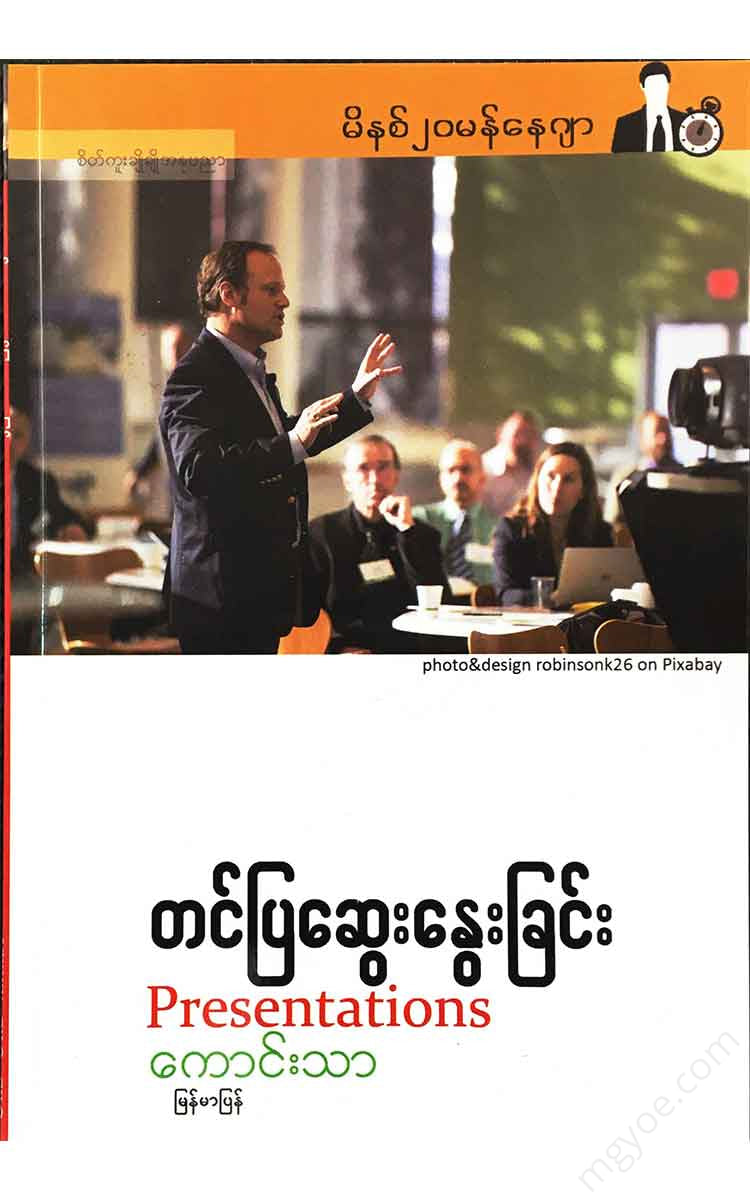စိတ်ကူးချိုချိုစာပေ
Good - presentation and discussion
Good - presentation and discussion
Couldn't load pickup availability
Key to the presentation
You have a newsletter to contact. You decide to give a presentation. Your way of thinking will win people over, so you will need to do some work. But even if you are not considered a naturally gifted public speaker, this sermon should not be too far from specific.
Whether your presentation is a formal report, a product pitch, a sales pitch, or a strategy pitch, whatever it is, the key to effective presentation is understanding your goals, your audience, and yourself. This book covers all of those key concepts.
Now... let's move on to them.
Why are you making the presentation?
If you are planning to present to a business audience, you will want to inform, persuade, or sell. In this case, you will need to do the following: * Explain new data. * Persuade people to support an idea or a response to build consensus. * Get people to take action. * Seek help in solving a problem. * Develop a capability.
Have you ever tried to do one or more of these things? Write down your goals as concisely as possible, like the list above.
Now look at what you've written and ask yourself if you need to give a presentation. Is this the best way to get a job done?
For example, if the number of people you need to reach is very small, it may be more effective to speak to each person face-to-face. If your audience is large and your newsletter is simple, you can send it out via email without any feedback.
Sometimes, you may need to make a presentation without knowing how to communicate clearly. If this is the case, you should be ready to start writing your own. Hold onto that purpose statement and take a moment to write it down as needed.
Defining your goal
Effective presentations start with a focus on thought. You'll need to figure out your primary goal. That goal generally involves getting people to understand something and take action.
Your broad vision
Let's go back to the short phrase you wrote down earlier. You can turn this into a short, concise sentence that describes your goal.
You have to start with “I want” and engage your audience.
See some examples below.
* “I work to propose new product ideas.”
"I want to inform my department about new programs."
“I want to help my colleagues brainstorm ideas for a project we’re starting.”
*“How do people know my team’s new business systems?”
"I want to show that I'm doing well."
* “Promotion for our top executives”
"I want other managers to sign a set of recommendations."
* “I want to give my group the tools they need to reach their goals this quarter.”
Your broad objective may be as stated above, but it should be clearly summarized in a few words.
Anyone should be able to understand this without having to read it twice.
The result you desire
Now is the time to focus on the specific outcomes you want to achieve in a specific case, out of all the things included in your presentation (more on that later).
For example, let's specifically consider the following case from the previous list.
“I want to show people how my team’s systems work well.” You don’t want attendees to walk away from this engaging system. You’re looking for results. What are they? You might need people to use these systems in specific ways that they can use in their daily work. Or you might need them to take the first step toward implementation within a week. Or you might want them to troubleshoot the barriers and come back to you with their findings within 10 days.
Write them down as a list of how you want to achieve your desired results. They don't have to be magic numbers. But they should be realistic. The fewer the numbers, the better. This way, you can keep your focus sharp and avoid setting your and your audience's expectations too high.
Your measure of success
Once you have a broad direction and desired outcomes in mind, you need to identify how you will measure whether or not you are achieving your goals.
Do you expect audience members to leave the presentation with ideas? Do you want attendees to complete this project by a certain deadline? Are you trying to measure success by “soft” metrics like engagement and sales? How will you measure those things?
Keeping metrics clear, rights simple, and what your audience can actually produce is all that matters.
If you're looking for feedback, you might want to ask people to fill out a summary form or conduct an online survey. If product delivery is part of the mix, be sure to provide a list of those items. Audience Engagement
You can easily send those who missed out without having to listen to the presentation that they will carry with them. It will be something tangible.









